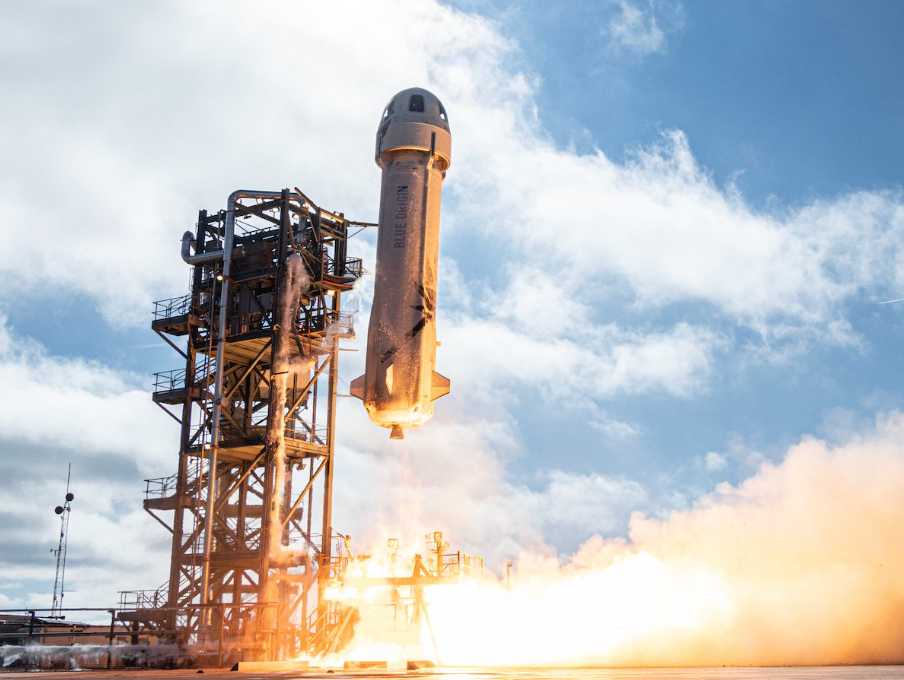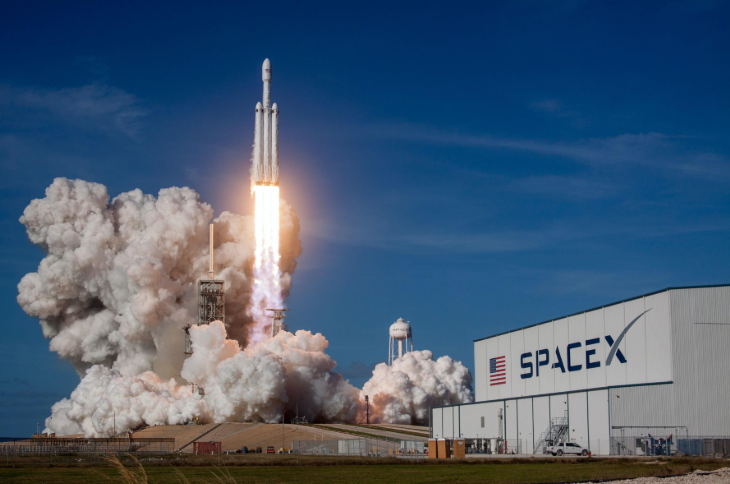
Insights & News
Space flight: Latest developments and future missions
Published Sunday, July 13, 2025
Space flight is entering an exciting new era, with both established space agencies and private companies pushing the boundaries of exploration and technology. From SpaceX's groundbreaking Starship tests to NASA's ambitious return to the Moon, the coming years promise to bring transformative advances in space travel. As reusable rockets become the norm and satellite constellations expand, humanity's access to space will grow like never before, opening up new frontiers for science, commerce, and adventure.
Recent space flight missions
SpaceX's record-breaking year
SpaceX had an astounding year in 2024, setting new records and achieving major milestones. The company conducted an unprecedented 134 orbital launches, shattering its own record from 2023. This impressive cadence was enabled by the rapid reusability of Falcon 9 boosters, with some flying up to 15 times.
Among the notable payloads launched were several batches of Starlink satellites to expand the megaconstellation, now providing high-speed internet globally. SpaceX also supported key missions for NASA, including resupply flights to the ISS and launching the Clipper probe to Europa.
However, the crowning achievement was the first orbital flight of Starship in December. The gigantic, fully-reusable vehicle reached orbit and safely splashed down, paving the way for lunar missions and eventual flights to Mars.
Looking ahead, SpaceX aims to further increase launch cadence, build upon Starship's success, and work towards the long-term goal of making humanity multiplanetary. The bar has been set high, but SpaceX seems poised to keep pushing boundaries.
NASA's Mars Sample Return progress
Collecting samples from Mars and bringing them back to Earth presents major logistical and engineering challenges. The distance involved, the harsh Martian environment, and the need to keep the samples pristine make it a complex undertaking.
To overcome these hurdles, NASA has developed a multi-phase approach in collaboration with ESA. The plan involves using the Perseverance rover, already on Mars, to collect and cache the samples. The next steps will be sending a Sample Retrieval Lander with a small rocket (the Mars Ascent Vehicle), along with ESA's Sample Transfer Arm.
Once the cached samples are loaded into the rocket, it will launch from the surface of Mars, the first ever rocket launch from another planet. The samples will then be transferred to an ESA Earth Return Orbiter in Mars orbit, which will bring them back to Earth, likely in the early 2030s.
Recent progress includes the successful collection of several promising samples by Perseverance, and the maturing of the designs for the follow-on missions. While still an immense challenge, NASA's methodical approach brings us closer to holding pieces of Mars in our hands.
International Space Station operations
The ISS has seen a flurry of activity in recent months:
Expedition 72 crew conducted dozens of scientific experiments in fields like biology, Earth science, human research, physical sciences and technology development.
SpaceX's CRS-38 mission in November 2024 delivered over 7,700 pounds of science and research, crew supplies and vehicle hardware to the orbiting laboratory.
In December, NASA astronauts Josh Cassada and Frank Rubio conducted a 7-hour spacewalk to install new solar arrays, upgrading the station's power supply.
The ISS also saw some notable crew rotations. SpaceX Crew-9 arrived in October 2024, bringing two NASA astronauts, a JAXA astronaut, and a Roscosmos cosmonaut for a six-month science mission. They replaced the Crew-8 astronauts who returned to Earth after a successful 6-month stay.
Upcoming space missions in 2025
Blue Origin's New Glenn debut
Blue Origin is poised to launch its massive New Glenn rocket for the first time in 2025. This maiden flight will mark a major milestone for the company's orbital ambitions.
The payload for the debut mission is Blue Origin's own Blue Ring spacecraft, capable of both hosting and deploying multiple satellites. This demonstration will showcase New Glenn's heavy-lift capabilities and its potential to become a major player in the commercial launch market.
A key objective will be the recovery of New Glenn's first stage booster. Following stage separation, Blue Origin will attempt to land the booster on its sea-based platform called "Jacklyn." Reusability is central to the company's strategy to lower launch costs and increase flight cadence.
A successful maiden flight would validate the extensive development and testing that has gone into New Glenn. It would also position Blue Origin as a formidable competitor in the large payload class, alongside SpaceX's Falcon Heavy and ULA's Vulcan. The commercial space race is heating up, and New Glenn's debut marks an exciting new chapter.
SpaceX Starship development
SpaceX faces significant challenges in readying Starship for operational missions in 2025. The fully reusable rocket has yet to reach orbit, and many technical hurdles remain.
However, SpaceX has an ambitious plan to rapidly iterate and advance Starship this year. The company aims to conduct high-altitude flight tests at least monthly to refine Starship's design and prove out key capabilities like in-flight refueling.
If these tests go well, SpaceX will attempt Starship's first orbital launch in mid-2025. That mission will see Starship lifted by the powerful Super Heavy booster before flying once around the Earth and splashing down near Hawaii.
Demonstrating Starship's ability to reach orbit will be a watershed moment, opening the door to more ambitious test flights and potential commercial missions later in 2025 and beyond. Possibilities include launching large payloads to geostationary orbit and sending uncrewed Starships to lunar orbit.
The rapid cadence of Starship testing and iteration planned for 2025 reflects SpaceX's signature approach to vehicle development. The coming year will determine if that approach can take Starship from an experimental prototype to an operational rocket with unprecedented capabilities.
NASA's Artemis program progress
NASA's Artemis program, aimed at returning humans to the Moon, has made significant strides in recent months. In November 2024, the agency successfully launched the Artemis I mission, sending an uncrewed Orion spacecraft on a 25-day journey around the Moon. This milestone demonstrated the capabilities of the Space Launch System rocket and paved the way for future crewed missions.
Looking ahead, NASA is preparing for the crewed Artemis II mission, scheduled for late 2025. This flight will send astronauts on a lunar flyby, testing critical systems and procedures needed for the subsequent Artemis III mission, which will land the first woman and first person of color on the lunar surface near the Moon's south pole.
As NASA works towards these crewed missions, it is also collaborating with commercial partners to develop the lunar Gateway, a small space station in lunar orbit, and the Human Landing System to ferry astronauts from the Gateway to the lunar surface. These elements, along with the Orion spacecraft and SLS rocket, form the backbone of the Artemis program's ambitious goal to establish a sustainable human presence on the Moon by the end of the decade.
Advancements in space technology
Reusable rocket evolution
The high cost of expendable rockets has long been a major barrier to increasing launch frequency and expanding access to space. Throwing away an entire rocket after a single use is an incredibly inefficient and expensive approach.
However, the advent of reusable rocket technology is revolutionizing the economics of spaceflight. By recovering and reflying the most expensive components, like the first stage booster, launch providers can dramatically reduce costs. SpaceX's Falcon 9, which can fly a booster up to 10 times, has dropped the price per kilogram to orbit by a factor of 5 or more.
Lower launch costs are already enabling much higher flight rates. In 2024, SpaceX conducted 134 missions, more than 4 times their total just a few years prior in 2020. As reusability technology continues to advance, with improvements in booster lifespan, turnaround time, and recovery methods, launch cadence and affordability should only improve.
Fully reusable vehicles like SpaceX's Starship promise to push this trend even further. By recovering and reflying the upper stage as well, Starship could drop costs by another order of magnitude, truly opening the floodgates to unprecedented levels of space activity. The future of rocketry is reusable, and we are already seeing the transformative benefits take hold.

Satellite constellation expansion
Satellite constellations like SpaceX's Starlink are growing at an unprecedented rate. With over 3,000 satellites already in orbit and plans for tens of thousands more, these megaconstellations promise to revolutionize global communications by providing high-speed internet access to even the most remote corners of the planet.
However, the rapid proliferation of satellites also presents challenges. The sheer number of spacecraft raises concerns about increased risks of collisions and the creation of more space debris. There are also worries about the impact on astronomical observations, as the bright satellites can interfere with telescope images.
To address these issues, improved space traffic management and coordination between satellite operators will be crucial. SpaceX has already started implementing collision avoidance measures and working with the astronomy community to mitigate impacts. As satellite constellations continue to grow, international cooperation and establishing clear guidelines for responsible operations will be key to ensuring the sustainable and beneficial expansion of these transformative networks.
Space is entering a new golden age, with exponential growth in launches and capabilities on the horizon. Reusability and satellite constellations are slashing costs and barriers to entry. While challenges remain, the future looks bright for pushing the boundaries of exploration, commerce, and connectivity. Just as Orizair makes private jets accessible and eco-friendly, space is becoming more open and sustainable than ever. The final frontier awaits.
Book a private flight
With Orizair, discover hundreds of available flights to reach your destination the green way.
Find your destinationAt Orizair, we integrate sustainability into private aviation by automatically offsetting the carbon emissions of every flight and collaborating with committed partners like Treesition. Discover our commitment.